































When it comes to brakes, peace of mind is priceless. That’s why premium quality Centric brakes are the right choice. Extensive research drives new product development, resulting in first-to-market product introductions and brakes that are built to fit. For quality and coverage you can trust, count on Centric.
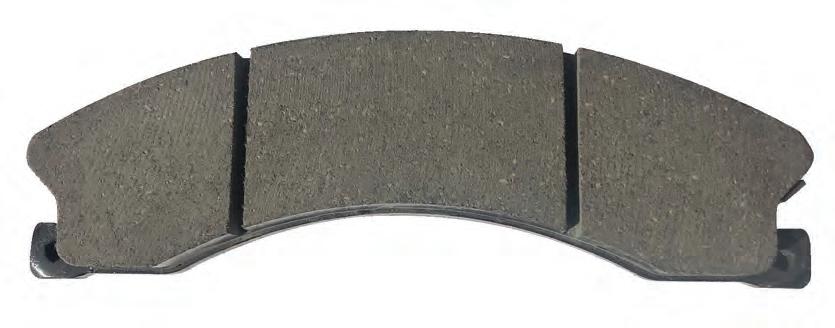











Publisher | Peter Bulmer (585) 653-6768 peter@turnkey.media
Managing Editor | Adam Malik (647) 988-3800 adam@turnkey.media
Contributing Writers | Greg Aguilera, John Burkhauser, John Enemark
Creative Director | Samantha Jackson
Video / Audio Engineer | Ashley Mikalauskas, Nicholas Paddison
Sales |
Peter Bulmer, (585) 653-6768 peter@turnkey.media
Delon Rashid, (416) 459-0063 delon@turnkey.media
Production and Circulation | Delon Rashid, (416) 459-0063 delon@turnkey.media
CARS magazine is published by Turnkey Media Solutions Inc. All rights reserved. Printed in Canada. The contents of this publication may not be reproduced or transmitted in any form, either in part or full, including photocopying and recording, without the written consent of the copyright owner. Nor may any part of this publication be stored in a retrieval system of any nature without prior consent.
Canada Post Canadian Publications Mail Sales Product Agreement No. 43734062
“Return Postage Guaranteed” Send change of address notices, undeliverable copies and subscription orders to: Circulation Dept., CARS magazine, 48 Lumsden Crescent, Whitby, ON, L1R 1G5
CARS magazine (ISSN# 2368-9129) is published six times per year by Turnkey Media Solutions Inc., 48 Lumsden Crescent, Whitby, ON, L1R 1G5
From time to time we make our subscription list available to select companies and organizations whose product or service may interest you. If you do not wish your contact information to be made available, please contact us.
There’s a lot many automotive aftermarket shop owners can take away from our 2022 Shop of the Year winner to implement in their own business.
At the top of the list is professionalism. And that’s something every corner of the industry can take, from suppliers to technicians.
We have a deep image challenge. It’s been around for years. It's one that needs changing. We want the motoring public to see technicians as the gifted, skilled pros they are, not some sort of uneducated grease monkeys. But we let them, for the most part.
I’ve heard many shop owners lament that they deserve more respect from their customers — after all, most of the general public has no clue what they’re even looking at underneath the hood of their car. That’s why they come to our industry.
But they come with disdain and little respect for the work the industry does. Why? Because we let them.
A lawyer charges hundreds of dollars an hour for their time. In return, they offer clients a complicated and technical service. But it comes with a welcoming space. They have a clean reception area. A coffee machine. Maybe some snacks. The office looks pristine — it’s a place someone is proud to work and where a client feels comfortable. There are no rips in the chair’s upholstery. It smells nice. Their degrees and certificates hang on the wall.
Then they come to their local auto repair shop and are expected to shell out $100 per hour (it really should be a lot more but that’s another discussion) plus the cost of parts so they can sit and wait in a raggedy chair and hope the thing they stepped in on the reception floor won’t stain their shoe, all while trying to fight off the formidable scent coming from the other side of the wall. Then they get back in their car and hope there isn’t a grease stain left on the steering wheel by the tech working on their vehicle.
Not all shops are like that but many are. There are enough out there that the public still thinks of their local shop as a place they don’t want to be in a second more than necessary.
So if we want to change the way the public thinks about this industry, let’s start with our appearance. Be well-dressed. Have a welcoming environment. Make them comfortable. Give them a waiting area that they actually want to wait in. Don’t scare them off with noxious odours.
Technicians have never been uneducated. They’re more educated than ever these days. They’re constantly learning — school never really ends for them because there’s so much to learn as vehicles change with the times.
Gustafson’s Auto Clinic in Athabasca, Alberta, is a model for how our industry should appear. They have paid attention to every detail, from the way their shop looks, to how technicians dress to ensuring they’re on top of the latest automotive trends.
They’re professionals inside and out. So join me in congratulating them as the Shop of the Year — and taking a lesson or two away from them to implement in your own business.
Corporate Office
48 Lumsden Crescent, Whitby, ON, L1R 1G5
ISSN 2368-9129 Online 2368-9137
Adam Malik Managing Editor, CARSLet me know what you think. You can reach me at adam@turnkey.media


As a shop owner I do not care about telematic data. It does not help me fix cars. But as a consumer, I don’t think the manufacturer should be allowed to build a data bank by zeroing in on individual consumers data. Instead of the aftermarket fighting for the “right to repair” that includes telematic data, consumers should be fighting for the right to have this data not being accumulated at all. At the very least some kind of legislation should be in place to make sure the consumers privacy rights are being protected after the manufacture has forced them to sign off on their privacy.
Rob Nurse, Bob Nurse Motors
Price it right and price it once. Its the same philosophy we have on used cars. If you start wavering on price, it implies that your margins were too great to begin with, and every interaction you have with that customer from then on, they will be under that impression. And as we all know, we all lose in a race to the bottom.
Geoff, ReaderEnjoyed the article and have a comment on the customer return part of the article. We have considered terminating relationships with customers due to the high return rate. We have a number of customers in excess of 50% returns. These are also the same customers with double the warranty rate as average. It is difficult to offer these customers the delivery times they expect when that urgent part is returned the next day. Our customers need to be better educated on there selling skills so the do not

have to order every part that might be possibly needed They should prepare the customer in advance to allow them to diagnose the car and schedule the needed repairs.
Bruce Dupuis, NAPA Auto PartsAs a service writer and shop owner, I totally agree. I see invoices from the area shops and all dealerships in our area. I am shocked at the information that is not there. If I was to pay a bill based on what is written on those invoices, I would say the invoice should read “free, no charge.” When you get an invoice from me there is a full compete story of what was done and what we found and what needs repair in what rider it should be done. All recommendations are listed. All codes and explanations are completely written out and the customer is sat down and gone through with me everything on the invoice if they want to.
Barry Dale, Trinity Repair
Absolutely agree. I couldn’t understand trashing legislation when it was on the table in favour of a voluntary program. To date, some manufacturers still refuse to allow aftermarket techs access to security updates and programming, especially in Canada. R2R legislation in the U.S. falls short also. It only covers vehicles manufactured since 2018 and only covers some modules, such as powertrain. The way vehicles are today, most systems need programming after repair, especially with module replacement. We need better access to these systems, preferably without having to buy a dozen laptops and VCIs to go with the subscription.
Art French, AML Auto ServiceA STANDARDIZED TRAINING program for the maintenance and repair of electric and plug-in hybrid vehicles has been developed by NAPA Canada and the Conseil provincial des comités paritaires de l’industrie des services automobiles (CPCPA) is expanding outside of Quebec.
The CPCPA — which is responsible for creating and implementing qualification and training standards for those working in the automotive repair and service industry — developed the EV Skills program in 2019. As part of NAPA’s NexDrive certification program, it will be offered outside of Quebec starting this fall.
NexDrive is the electric banner from NAPA, providing its Autopro and AutoCare member shops with the training and equipment needed to provide maintenance and repair services for next-generation vehicles.
Level 1 training is already underway in Ontario; it will expand along with Level 2 training to British Columbia in early 2023. So far, almost 400 auto mechanics have completed the program in Quebec, with demand continuing to row, the announcement said.

THE CANADIAN AUTOMOTIVE AFTERMARKET took a hit during the pandemic but is now on the rebound, according to the Automotive Industries Association of Canada’s 2022 Outlook Study.
The report examined the state of the industry and where it’s projected to go. It found that after hitting a high of $39.7 billion
Have an interesting picture to share? Send a high-resolution image to adam@turnkey.media
Perry from Keenan’s Service Center in Salisbury, New Brunswick, sent in this photo. A customer came in complaining that their power window would not work on the driver's door. They found this wooden contraption to hold the window up, something they have never seen before. No wonder the window wouldn’t move. “Now that is some fine woodwork,” Perry quipped.

in economic output in 2018 and 2019, everything from supply chain challenges to health restrictions knocked that number down to $35.4 billion in 2020. But with restrictions lifted and some supply chain relief taking place, 2021 came in at $37.8 billion.
The industry is being buoyed by vehicles in operation (VIO), which “increased at a healthy pace,” according to the study. There were 25.7 million VIO in Canada roads in 2021; about 59 per cent being light
www.repxpert.us

trucks, up from about 56 per cent in 2019.
“With consumer preferences shifting away from passenger cars, the growth was entirely attributed to the light truck segment,” the study noted.

FOR NOW, MOST automotive aftermarket businesses won’t pass on credit card fees to their customers. But at least a third of the industry is undecided.
Following a class action lawsuit, most Canadian merchants are now able to pass on credit card processing fees to their customers. Those in Quebec, however, will not due to the province’s consumer protection laws.
Auto Service World, the online portal for CARS, asked its readers how they will approach this. When asked if they would pass on fees to consumers, most (43 per cent) said no. But not far behind were those who are still thinking about it — 39 per cent said they’re undecided. One in five (19 per cent) said they would.
When looking at whether they’d pass on fees to business customers, aftermarket professionals were more likely to pass on those costs (25 per cent) in this case. However, like with consumers, most (43 per cent) said they wouldn’t and almost a third (32 per cent) were undecided.
ÉLISABETH LAMBERT HAS been named chair of the Automotive Industries Association of Canada’s Quebec Division Committee.
She’s the first woman to hold the seat in the group's history. Lambert spent the last two years serving as the committee’s vice president and has been an active member since 2019.
Lambert is the vice president and general manager of Pièces d'Auto Joliette. Apart from representing the parts store sector on the committee, she is also

involved in several subcommittees, including the "I am AIA" committee as well as the succession group.
IDEAL SUPPLY HAS acquired Wyebridge Machine Limited, run by the MacLennan family in Midland, Ontario.
The deal closed on Nov. 4. Wyebridge opened its doors in 1962 with John and Mary MacLennan running operations. The shop stayed in the family with siblings Robert, Ronald, Barry and Anne overseeing the business.
In an announcement from Howie Pruden, Ideal’s vice president and general manager, he noted that “the siblings are quick to credit the success of the business to the great staff they have at the store now and have had over the years.”
GEORGE BROWN COLLEGE has launched an Electric Vehicle Technician Certificate Program.
It’s a self-paced distance education program — students can learn at their own pace from anywhere. It’s designed for automotive technicians interested in upping technical knowledge to diagnose, service and repair high voltage EVs. The Toronto school said it’s also open to other trades professionals, like electricians, to learn to install, design and maintain residential or
commercial charging stations.
“Right now, the demand for electric vehicles is growing at unprecedented levels, but the infrastructure to support that growth with technicians that can service EVs or maintain charging stations isn’t there yet,” said Colin Simpson, the school’s centre for continuous learning dean.
CARQUEST AND WORLDPAC have opened a combined distribution centre in Ontario, the first time both companies have teamed up on operations.
Both are subsidiaries of Advance Auto Parts, which announced the opening of the new DC in Bolton, about an hour northwest of Toronto.
The new facility measures approximately 580,000 sq ft. It has the capacity to hold more than 350,000 automotive parts, serving the majority of domestic and import vehicles in Canada. More than 200 employees work out of the new Carquest and Worldpac building.
More than 130 Carquest stores and Worldpac branches in central and eastern Canada are served by the DC. In turn, they serve more than 37,000 professional repair shops and automotive dealerships, including 500 TechNet Professional repair shops.
THE RISING COST of automotive aftermarket prices is starting to erode demand from consumers.
A forecast from The NPD Group found that key aftermarket products like spark plugs, tires, wipers, motor oil and paint have seen a 30 per cent increase in prices. This is forcing consumers of all income levels to shy away from auto care, it said.
“The automotive aftermarket is in a tug of war between the headwinds and tailwinds swirling in the consumer’s
economic existence,” said Nathan Shipley, automotive industry analyst for NPD. “Caught between mobility needs and elevated prices, consumers have moved from a mindset of getting what they need when they need it, to one of prioritized spending and making do.”
Lower-income households most prefer the DIY route. But NPD reported they’re deferring maintenance to stretch their dollars as they feel the burden of higher grocery, gas and other costs.
NPD noted that households earning more than $100,000 were the biggest drivers of aftermarket growth for a few years. But these consumers are now taking their discretionary dollars elsewhere — such as travelling and other activities missed during the pandemic.
MILLENNIALS, OR GENERATION Y, are the fastest-growing generation in the do-it-for-me marketplace, according to a new report.
Between 2012 and 2022, those born between 1981 and 1999 — aged between 23 and 41 — saw their DIFM volume soar from 28 per cent to 36 per cent, reported Lang Marketing in its Aftermarket iReport, Generation Changes Alter DIFM Buying Habits

That places them just ahead of Gen X (born between 1965 and 1980) who went from 33 per cent to 35 per cent market share over the same period.
Baby Boomers, aged 58-76, saw their reliance on DIFM drop, down to 29 per cent from a high of 39 per cent.
Gen Zers (born between 2000 and 2014) weren’t included in this year’s research.
These trends show how the rest of the decade will play out, Lang noted. It estimated that by 2030, Baby Boomers’ market share will be in the low double digits. Gen Xers will hold steady at 37 per cent by that time. That leaves Millennials in the leading spot as the biggest generator of DIFM volume.
CARS will regularly feature automotive schools across Canada. In this issue, we learn more about Vancouver Community College If you’d like your school featured, reach out to adam@turnkey.media.

As one of the oldest public colleges in British Columbia, Vancouver Community College (VCC) offers postsecondary training in over 140 programs including bachelor's degrees, diplomas, certificates, and apprenticeships. With two campuses located in downtown and East Vancouver, more than 15,000 students receive hands-on instruction in culinary arts, business, design, health sciences, hospitality management, transportation trades, music, and more. VCC’s Transportation Trades programming consists of automotive collision and refinishing, heavy mechanical trades, and automotive service technician. We offer foundation programs, apprenticeships, and e-pprentice courses.

VCC operates one of the largest garages in B.C. where students gain real-world experience by working in a simulated environment that services 60-80 customer vehicles each month. Students have access to the latest equipment and cutting-edge technology. For example, VCC recently acquired the 2022 Toyota Mirai, one of the only hydrogen fuel cell vehicles available on the Canadian market. Students will have an opportunity to learn how this clean technology works. In addition, VCC has always been committed to accessible, flexible, and engaging learning through our trades programs. We brought VR/ AR into our classrooms and utilize 3D equipment scanners so students have access to training aids for their theorybased education. We also have e-pprentice opportunities for students to take advantage of learning online while working in the automotive service industry.
Name of school: City:

Head of program:
develop programs and courses that prospective students and industry representatives need. Climate change is indisputably shaping the future of the industry and environmental sustainability is part of VCC’s future roadmap. We work closely with industry partners and team up with hydrogen and clean energy projects supported at the federal and provincial levels to align our programming. An example of this is that in addition to acquiring training aids like hydrogen fuel cell vehicles and electric vehicles, VCC is also the first academic member to join Hydrogen BC, the regional branch of the Canadian Hydrogen Fuel Cell Association. We also recognize that to become skilled at what you do, you need to be taught by the best. As a result of strong industry partnerships, VCC attracts B.C.’s top automotive instructors. All full-time instructors have Red Seal certification and a minimum of 10 years of industry experience
At VCC, we understand the importance of being at the forefront of automotive trades education so that we can
Automotive technicians are in high demand! In B.C., it is estimated that there will be more than one million job openings in the next ten years. Many of those jobs will be in automotive trades so there are a lot of employment opportunities. At the same time, because VCC is adapting to the evolving needs of the province and industry by supporting climate change goals, students are learning the latest technology and graduating with the job-ready skills that employers are looking for. VCC continues to design programs for the future to support the industry moving forward in a clean and sustainable way.
A special section dedicated to showcasing automotive trade schools
How are you preparing today’s students to be tomorrow’s automotive service professionals?Vancouver Community College Vancouver, British Columbia Lucy Griffith, Acting Dean, Trades, Technology & Design
Why is this an exciting time to be a student in an automotive trade school?
Stats that put the North American automotive aftermarket into perspective


The value of the Canadian automotive aftermarket sector is on the rebound following the pandemic. It sat at $35.4 billion in 2020 after reaching a high of $39.7 billion in 2019.

Average number of service visits for electric vehicles has outpaced service visits of internal combustion engine vehicles in the last 12 months.
ICE vehicles averaged 2.3 visits.
Used


Model year 2016-2021 Honda CR-V had the most number of thefts in Canada. With 236,555 insured vehicles, 1.7% of all CR-Vs were stolen.
Équité Association
Canadian Black Book and Fitch Ratings

There are many options for training and all are viable options for your shop
I’m hearing strange discussions at the moment regarding training. Some shop owners are questioning if it’s the right undertaking for their business at the moment — we’re coming out of the pandemic but heading into greater economic uncertainty.
It’s safe to say that the merits of great training are evident. It’s always the right time for training. The world doesn’t stop changing — certainly not the automotive aftermarket — so skills need to continuously be sharpened. This, of course, applies to both the non-technical and technical aspects of learning in your repair shop.

But here’s where there is some debate: Should I send my team to face-to-face training? Do I set aside time for online training? What about in-store coaching?
The correct answer is “all the above.” Not the answer you wanted to hear? Well, each option has its merits and advantages.
You should set time aside during regular working hours for a combination of online learning, toolbox talks and, where needed, in-person training off-site.

Shops should schedule toolbox talks and online learning programs as a part of the “normal week.” Toolbox talks are an excellent opportunity during a coffee break or natural pause during the workday. Topics would include specific news topics that you want your team to know about in the industry or even how your business is doing.
The online training courses can be scheduled according to your workload but it’s important to ensure that both you and your team understand that learning is part of their job and therefore a requirement of employment.
In-person learning is great to solidify the online training and to practise the skills picked up online. I have seen the best results come from a blend of online and in-class learning — ignoring one could cause you to unwittingly lose out on the full experience.
Remember, the practice of a new skill is also applicable in the workplace. For example, if you have a technician doing electrical online courses, make sure that they get the next electrical job that comes in the door. This will go a long way towards cementing the knowledge for them and helping your shop.
Though the focus is very much on technical training, it’s vital that we don’t forget about management training — developing your own skills and your managers’. Enhancing your skills to run the business and having managers who are on top of their own training is critical to the success of the business.


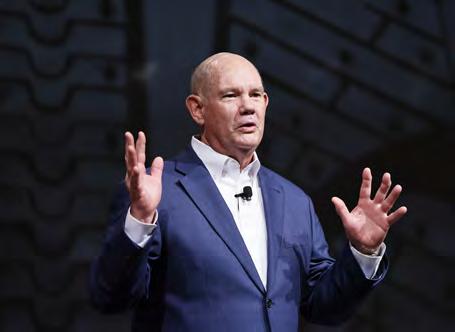





Nov. 1-4 Las Vegas, Nevada
The biggest event on the automotive aftermarket calendar looked more like normal. Both AAPEX and SEMA Show were bustling with attendees from all over the world. Canada Night was back as well with a full force of Canadians in town. Apart from the trade show, attendees were able to take in a variety of training sessions, be it management or technical at the Las Vegas Convention Center and Venetian Expo, as well as several networking sessions.

As of May 2018, backup cameras became a mandated feature on new vehicles in the United States and Canada. And by this September, twenty automakers say that 95 percent of their vehicles will include Forward Collison Warning (FCW) and city-speed Automatic Emergency Braking (AEB). Audi, BMW, Ford/Lincoln, Honda/Acura, Hyundai/ Genesis, Mazda, Mercedes-Benz, Subaru, Tesla, Toyota/Lexus, Volkswagen, and Volvo have already met that goal.

Many, if not most, of these vehicles have camera-dependent systems such as Braking (AEB) with pedestrian detection and even some Blind Spot Detection (BSD). And these are just the basic systems at this time. The front-facing cameras are also used in traffic sign recognition, automatic parking, crosstraffic alert, and adaptive lighting systems. These technologies’ emergence and increasing popularity have added layers of complexity, time, and cost to vehicle repairs, including glass repair and replacement.
How vital is calibration to the effectiveness of ADAS? Consider this Insurance Institute for Highway Safety (IIHS) test highlighting the frightening result of a misaligned front camera and its effect on the safety system. The IIHS tested a vehicle with a front-facing camera misaligned by 0.6 degrees to the right. This variance affected “the perceived collision-threat, thus delaying the driver’s prompt or brake warning and then delaying when the vehicle itself initiates braking,” the IIHS found. The result was a warning prompt that gave the driver just 2.8 seconds to respond and gave the vehicle just 0.9 seconds to brake. It didn’t, and the vehicle collided with the obstacle at 20 mph.
Close to 60 million vehicles with an Advanced Driver Assistance System (ADAS) are on the road today. Either by government regulation or vehicle brands wanting to meet consumer desires, that number will only grow.
It’s essential to not simply learn the basic concepts behind today’s vehicles’ many advanced systems but also be knowledgeable about the different ways each brand and model uses the data from these input devices—including the cameras and radar sensors—to control how the vehicle reacts. Therefore, it falls on the technician’s shoulders to learn the systems of the vehicles they most often service and continues to keep up with emerging trends.
So, it’s more than comforting that Autel, a leading developer of automotive diagnostic scan tools, produces two ADAS calibration systems, the MaxiSYS Standard Frame, and the MaxiSYS MA600, a mobile frame system. Both systems provide upgradeable options to enable technicians to efficiently calibrate cameras, night vision, Lidar, and radar-based systems that are instrumental to vehicle operations and the safety of its passengers.


The Autel calibration systems include patterns, targets, radar, and night vision calibration tools used with the MaxiSYS ADAS software. In addition to communicating with the ADAS component and initiating calibration, the tablet displays basic yet essential OE-vehicle requirements to ensure correct vehicle height, such as parking on level ground, filling fuel and fluids, and carrying no additional cargo. Each calibration screen lists the tools needed, including the correct vehicle-specific target or pattern part number. The tablet displays exact OE-specific measurements and easy-to-follow instructions. The standard frame system is also available with the IA800 optical frame-to-vehicle positioning system that uses six cameras and wheelclamp targets to quickly set the frame’s distance, angle, and offset to the vehicle. The use of the IA800 significantly reduces the pre-calibration setup time—the most time-consuming part of the entire calibration process.
The Autel calibration systems include patterns, targets, radar, and night vision calibration tools used with the MaxiSYS ADAS software.
As automakers advance their systems toward the autonomous vehicle, there is little doubt that these drivers’ assist technologies will necessitate technicians and their shops to evolve and adapt their learning curve to prosper.






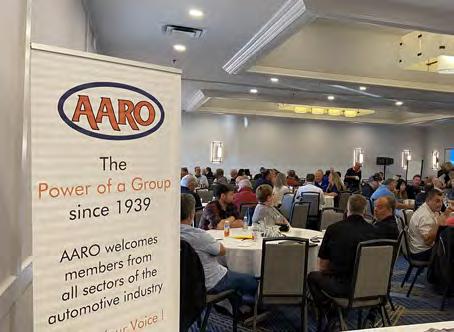

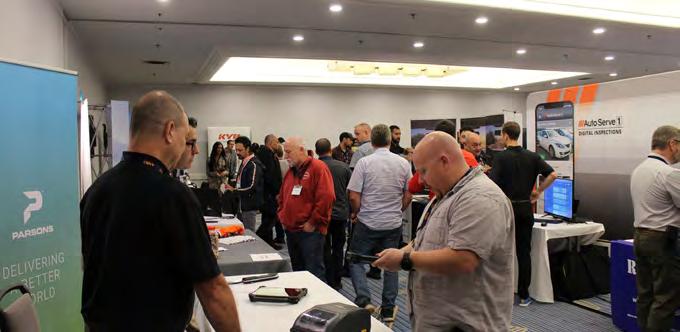

Sept. 21-24 Mississauga, Ont.
Attendees of the Automotive Aftermarket Retailers of Ontario Symposium got a front-row seat to learn about the upcoming changes to the province’s Motor Vehicle Inspection Station program. Along with the informative session, attendees were able to meet with vendors and industry partners during the symposium’s trade show. There were also a series of management training sessions and two days of dedicated technical training as Lindertech moved under the AARO umbrella.
YOU’D BE FORGIVEN IF you walked into Gustafson’s Auto Clinic in Athabasca, Alberta, and thought you were in the wrong building.
It’s happened with customers — they open the doors and expect to see what has been engrained in their minds of what an automotive repair centre should look like: an uninspiring space, drab and unkept with dim lighting. They also expect to smell the unmistakable odour of tires, oil and other chemicals wafting in from the shop on the other side of the door further down.
But not when you enter Gustafson’s. It looks nothing like your typical shop.
“People will come in and they walk out — and they come back in and go, ‘Is this Gustafson’s? I thought this is a lawyer's office,’” said Stacey Gustafson, who, along with her husband Kevin, owns the shop.
It’s a dedication to professionalism and raising the bar of what a shop can and should be that earned Gustafson’s Auto Clinic the title of 2022 Shop of the Year from CARS.


The Gustafsons strive to present a professional industry to the world. They believe the job of a technician — that’s what the job is today; not a mechanic and certainly not an installer — is highly skilled and requires extensive training, thus commanding the respect of the industry and the public.
“I think one thing that industry is really lacking is the idea that this is a profession; a technician is a profession,” Kevin explained. “So the better we can pay our guys, and the more we can do for them, the more it is a profession, and the
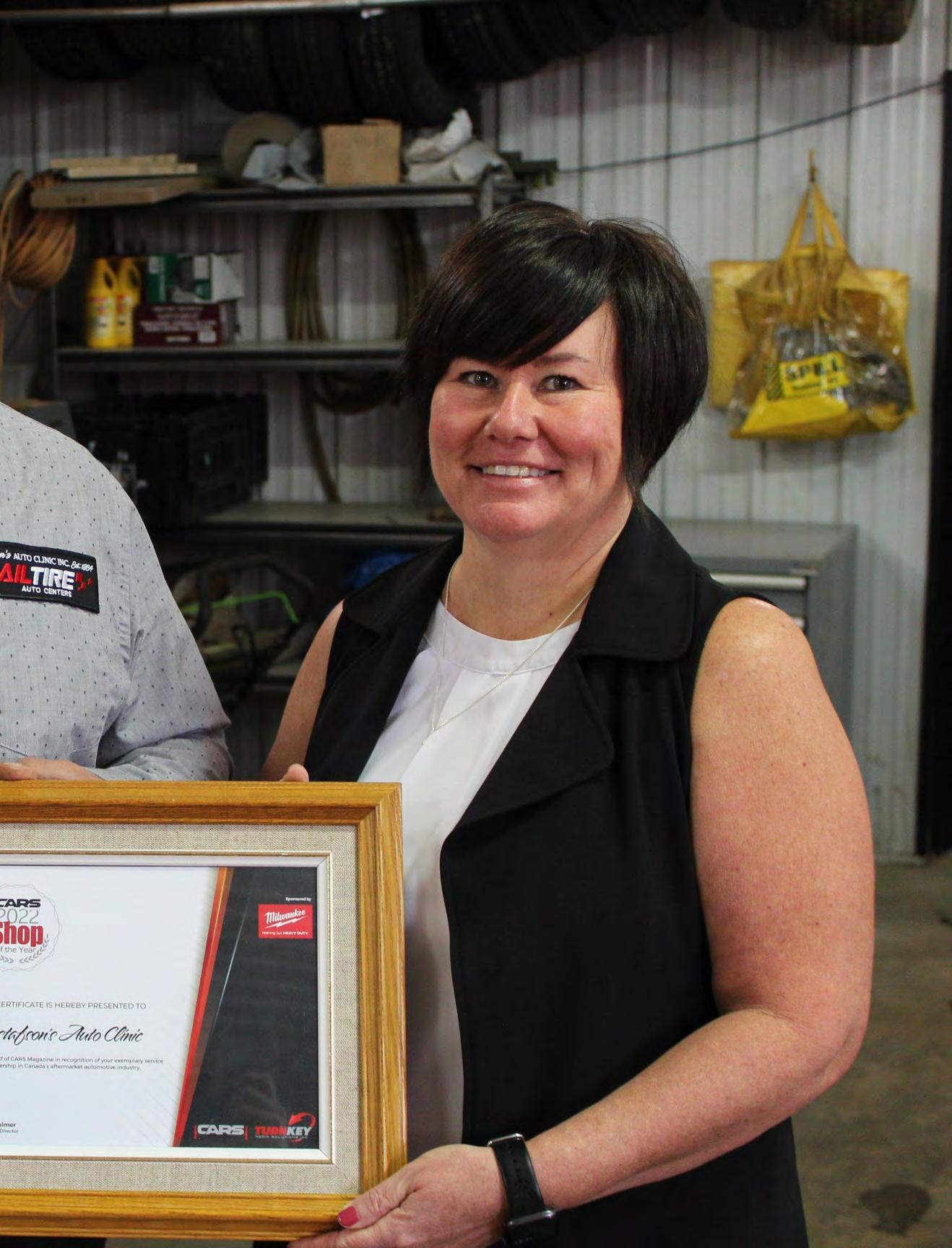

more we can attract qualified people.”
It’s not hard to see the difficulties in attracting skilled, qualified people to the automotive aftermarket, he added. That’s why shops need to change how they operate. This can be a great industry to work in — though shop owners need to be the leaders in making it so.
“When you run the shop properly, and you charge accordingly, you can afford to pay your techs right and update your equipment, do your training and all these things,” Kevin said.
Kevin has been in the industry since he was a kid. After running a Texaco Service Station, his father opened the shop with Kevin joining as a technician. Stacey essentially fell into the industry. Her mother ran the restaurant in a local hotel and Stacey helped out. Her mom taught her how to run the
business, including doing bookkeeping. That set her up to join the aftermarket when Kevin’s dad needed a bookkeeper in his business. She joined part-time at first in 1987.
“Then it became a full-time and lifetime job,” Stacey said with a laugh.
They gradually took on more responsibility in the business before fully owning it in 2001. Since then, they’ve been a leader in how an aftermarket service and repair shop should operate.

“I'd be the first one to say that, when I started, you just worked hard and lost money. You worked very hard, and you lost money because you didn't have the business side of it to understand that there's a procedure and a way to charge and manage it all,” Kevin said.
“We're very disciplined in in how we run our business,

the numbers that we measure and how we manage,” Stacey explained. “Our technicians, it's mandatory for them to have management training.”
It’s a way for their technicians to be invested in the business. Stacey said their techs have been mistaken as business owners at management training because they maintain a professional appearance compared to most technicians who often look like they just came from working underneath a vehicle.
“They are professional, and it is a career,” Stacey said of technicians.




When they’re recruiting, a candidate who says they’re looking for a career stands out to them. “They're not saying they want a job — they want a career. That really stands out to us because that's what our philosophy is,” she added. “We want them to have a career, we want them to be paid professionally. With the technology that's out right now, they're not just a trade, they’re like computer geniuses.”
But it’s difficult getting people to understand. The Gustafsons told the story of their son — Colton, who now works with them as a licenced technician — who was in an advanced math class in high school. The teacher said anyone planning on being in a trade shouldn’t be in that class.
Milwaukee Tool brings innovation to the professional detailing industry by providing two best-in-class polishers capable of completing both polishing and heavycorrection applications. As the first true corded replacement, the M18 FUEL™ 15mm and 21mm Random Orbital Polishers deliver more power and control than other cordless polishers on the market, while maintaining the superior ergonomics that users expect. Milwaukee® is committed to improving productivity by providing performance-driven and trade-focused solutions so users can perform an entire day’s work on one battery system. The new M18 FUEL™ 15mm and 21mm Random Orbital Polishers are fully compatible with the entire M18™ system, now offering more than 250 power tool solutions.
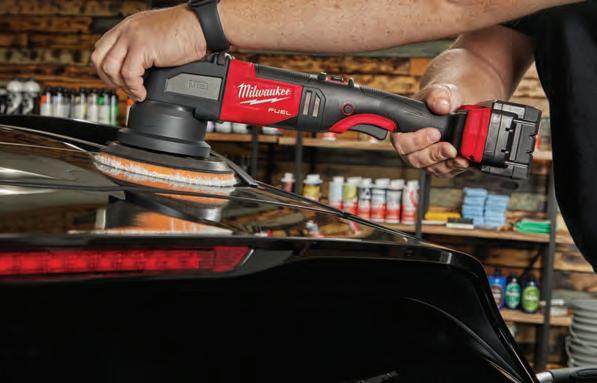
“It was disheartening to hear the teacher say that,” Stacey recalled.
They talked to the school about it. They pointed out that being in the trades doesn’t mean someone isn’t smart — and many advanced courses are needed to be a tech.
Edwin Parr Composite High School in Athabasca is without a shop instructor at the moment, which means kids aren’t getting an opportunity to learn about the industry’s potential. The Gustafsons are trying to get involved with the school’s Career Day so they can speak first-hand about working in the automotive industry — with professionalism being front and centre.
For the Gustafsons, part of being professional is having a professional-looking business. They don’t have a typical-looking shop. There are no tires in the showroom. They installed extra doors to keep odours
from the bays out of the customer waiting areas. There are essential oil diffusers as well, along with a coffee bar inside. More recently, an outdoor patio was added.
“Probably a little bit selfishly, we wanted it for ourselves on a nice summer day to be able to sit out there when you have a break or whatever,” Stacey explained. “Our clientele really likes it and we call it the 'garage patio.' They love sitting out there. They want to know when the drinks are being served.”
Stacey and Kevin ensure their shop doesn’t just appear to be professional — they back it up. They have built a culture within the shop with their staff as well as with the customers of the community.
They believe in doing full inspections, educating the customer and ensuring preventive maintenance — making sure the vehicle is running the way it is supposed to.

“Preventive maintenance is a big thing,” Stacey said. “We don't want our clients to have those big breakdowns where it's costing them a whole bunch of money. We would rather have them do their maintenance to prevent those things from happening so that they can keep their vehicles for a longer period of time.”
They put the same effort into making sure their staff are taken care of as well. The way the Gustanfsons see it, they’re responsible for their employees and their families. So they offer profit sharing, retirement plan savings and full health coverage. Staff get tool allowances and all uniforms are provided.
“Our guys do not wear coveralls. They do not wear hats. They're very clean looking. They have dress shirts and black pants on. They're very professional looking,” Stacey said.
Amid all the professionalism, there’s a time to play as well. The Gustafsons ensure staff have fun. For example, the
company hosts a golf tournament every year. They added a Happy Gilmore Hole where, as the titular character from the movie does, participants putted using a mini hockey stick. And since most employees are golfers, the shop pays a portion of the staff’s golf membership.
And that’s essential because a business is nothing without its staff – Gustafson’s included. They believe each person plays a role in the success of the business.
“They've taken an investment in it, they feel like they're a part of it, they know all the numbers of the business because they need to know what it costs to run a business and why,” Stacey explained. “We just don't put our goals up on the wall without them knowing what's behind that goal and what it takes. And if you properly manage your business, then you have the money to invest in your staff.”
Everyone who works at Gustafson’s is like family, Kevin added.
“It's a small-town thing but I think you can do that anywhere in your business, your culture,” Kevin said. “The guys are very involved with whom we hire. We don't hire somebody without getting involved with all the staff. We want their input too because you need to get along with everybody.”
This feels uncommon in the aftermarket. But The Gustafsons are adamant that this isn’t the aftermarket of old. Times have changed and so should how shops operate.
“We're a profession. We're not mechanics anymore. The cars aren't a carbureted, oil-leaking, rundown whatever — they're rolling computers,” Kevin said. “And if you've looked at some of the vehicles on the road, and what they look like and how they work, and what they do, the shops should look the same. You don't take your Mercedes to a Mercedes dealership and get a handwritten invoice with a guy with greasy fingers doing the paperwork. The aftermarket needs to step it up.”

The Gustafsons make sure their technicians are on top of training, be it through AVI, their first-call jobber Automotive Parts Distributors, ACDelco, or Car Gurus. They will make occasional trips to SEMA for training, as well as Lindertech as well. Because they’re not in a major city, getting to live inperson training events can be difficult.
“You got to go there to get the training. And so that's just another reason why you need to charge properly, so you can afford to keep your techs up to date,” Kevin said.
The company is fully staffed for the first time in three years, but the Gustafsons noted that they had to take on people they saw potential in and train them in the auto repair industry. As mentioned, they ensure their staff attends training, whether it’s virtual or in person. Two of their techs got licenced over COVID — as a reward, they attended the SEMA Show to get more in-person training opportunities.

“It was kind of a neat experience for them,” Kevin said.
Those who knew Bob Greenwood well enough may feel like they’re hearing his voice in Kevin and Stacey’s. That may be because they were long-time students of the legendary aftermarket coach.
“We are huge Greenwood supporters and we've been involved with him for many years and really are still mourning his loss,” Stacey said. “He just gave so much to the industry and [kept us] so up to date on everything.”
The Gustafsons credited Greenwood with teaching them how to be a proper business. “He taught us so much about how to measure and manage the business. So it's a huge loss to us and to the industry. I still use all of his stuff,” Stacey said.
While we can go back and read old columns or watch old videos of Bob — those lessons are still applicable — it’s his eye on the future that is missed most.
“Bob was always looking at the next stage of what's evolving in this business and he would prepare us — 'OK, EV cars are coming down the line, this is what's going to happen and we're going to get training for your guys' — he always was on top of that,” Kevin said. “It was just kind of a kick in the rear to get yourself prepared for these things that were about to happen. And that's all gone now.
“It’s just that with the industry changing, how do we adjust that now? And I don't know the answer to that either. We've got the basic knowledge; we all have to adjust on our own. But we haven't got that person who’s replaced him.”
What advice would the Shop of the Year winners like to pass on to their peers? For Stacey, it’s to stay disciplined.

“It takes a lot of discipline to run an automotive repair shop. Bob always said this is the toughest business to try and run and be successful at. So be disciplined,” she said. “You have to be so disciplined. And you have to stay relevant in this industry if you want to continue.”
For Kevin, he urged everyone to up their business training.
“Get some business training, management training, because most of us shop owners are good technicians that decided to start a shop and know nothing about business. And I'm not saying that in a bad way because I was that person,” he said. “It doesn't matter how hard you work, if you're not charging properly and taking care of that end of it, you just bought yourself a job.”
We are huge Greenwood supporters and we've been involved with him for many years and really are still mourning his loss.”The Gustafson's Auto Clinic team of, from left, Ty Rouault, Alesha Potter, Stacey Gustafson, Taz Pichota, Kevin Gustafson, Colton Gustafson, Chester Kyle Pangilinan and Shane Collison. (From left) Connor Anderson and Jessica Langridge, Milwaukee Tool territory representatives, with Stacey and Kevin Gustafson, Shop of the Year winners.


The AC temperature after repairs. This type of picture may be included in the inspections being sent to the customer.
You should be paid for diagnostic time. You should be paid for your training, expertise and the tools needed to solve the issues presented by today’s complex vehicle systems.

Yet, many shops struggle with their customers over this resulting in lower margins and customer distrust.
Much of this situation is generated by the misinformed public believing that all a shop needs to do is pull a code that tells them exactly what needs to be fixed. Adding to this negative belief is the fact that some parts chains offer drivers free system tests just to sell them the part that is related to the code that they find. And of course, doing a quick search on the internet doesn’t help this situation either.
We need to take steps to educate our customers in order to overcome these beliefs. This education will not only apply to the diagnosis of drivability issues, but it will also need to apply to all needed diagnoses that we will run into on a day-to-day basis. Especially with the realization that almost no part of the vehicle is untouched by technology. We need to begin this change now for our shops to survive in the long run.
The first step in this process is that shops need to build trust with their customers. It’s been decades that this distrust has existed. Our industry is partially to blame for it. Don’t get me wrong here, it’s not like we all intentionally brought this upon ourselves. But it is something we all need to overcome.
Using a digital service process is one of the ways to overcome this distrust. The digital service process improves customer trust through text communications, both automatic and manual, and the transparency brought about by using digital inspections.
Clear and concise communication is the foundation of trust in everything we do. All it takes is just one misunderstanding to break trust. Texting helps overcome this by allowing quick and constant communication. Being able to keep a customer up to date on what is happening during a service visit can lower the level of anxiety, which is one of the main reasons vehicle owners put off repairs and services. Texting recommendations and reminders help keep due services in mind for the customers, helping eliminate the surprise of needed repair and service.
Digital inspections will also contribute to driver trust by providing transparency that could only previously be gained by walking a customer out to the bay and vehicle, educating them on the “why” of the repairs and recommendations. Pictures, videos and clear descriptions help drivers because “seeing is believing.”
The general trust that the digital service process brings between shop and customer can now be focused on diagnostics. Used properly, you can overcome the level of skepticism the driver has about the need for diagnostics. This same process can now be used to build value in what needs to be done, possibly eliminating any diagnostic fee pushback.
You won’t only benefit in a monetary way but also by building needed trust that our industry lacks with the consumer
Many digital inspection software packages allow a shop to create its own inspections. This option allows a shop to build diagnostic routines that can show the customer some of what needs to be done to diagnose an issue. The diagnostic inspection can build value in the skills, tools and steps required to accurately identify the cause of the issue.




a component. This can show the customer why it takes eight hours to complete a task. Additionally, a picture can show the new part in place alleviating the common question, “Did they actually do anything?” Creating understanding results in trust. Building value and transparency into what needs to be done to determine the cause of the concern will make it easier to sell diagnosis services. The fact that your shop probably is the only shop that offers this process with digital diagnostic results, sent straight to the customer, will make it not only easier to charge for diagnosis, but you should also be able to charge more.
Think about it: When you ask a customer for diagnostic time, all they currently get is an estimate with a bigger bill. There is nothing else to show for the money spent on getting to that point. Eliminating this uncomfortable situation will change everything about diagnostic fees.

Building a diagnostic inspection, each step can be set from verifying the issue, reading codes, and the testing that follows. Will the customer understand the steps and readings that the technician will take? Probably not. But for the first time, they will be getting something for their money. They will also learn about the steps required after the code is read. I expect that this will increase the level of trust between the shop and the driver.
Let us use an AC performance test as an example of how this works. Inspections are made of ‘points.’ Each point can represent a step in the diagnostic process. The required step or test is done and documented via text, photo, or video. The outcome of that point determines the next steps or points that a technician will follow.


During the process, the tech will document findings and readings for each test (point). Will the customer understand what the pressure readings (or fuel trim, oscilloscope readings and other tests) indicate? No. Just like they don’t fully understand when you walk them out to the vehicle in the bay and you point out the issue for them. A level of trust is built and more than likely they will authorize the repairs.
The diagnostic inspection can also be used to document the steps required to replace





































































































The first step in this process is that shops need to build trust with their customers. It’s been decades that this distrust has existed. Our industry is partially to blame for it."John ‘JB’ Burkhauser is director of education at Bolt On Technology. He has more than 35 years of experience as an auto repair industry specialist with expertise ranging from A Level and ASE Certified Master Tech, shop advisor/manager, to automotive trade school instructor, and technical writer. For more information or to get in touch, visit www.boltontechnology.com
Shops need to be less dependent on their jobber to essentially be their warehouse. They’ll find the business smoother to run and customer satisfaction higher if they act as their own warehouse and keep more products within their four walls.
After reading CARS magazine’s May/June issue, I disagree with some of the article, Finding Success, which presented the results of the Annual Jobber Survey — especially when it comes to relying on your supplier as being the warehouse of your stock needs.
We had a pure muffler shop for more than 44 years in Prince George, B.C., which has a population of about 80,000. By “pure,” I mean we only installed exhaust, shocks and struts. We specialized in single and dual custom exhaust systems, carrying stock from one inch to six inches in diameter.
Admittedly, running a mechanical shop is a different game from our shop. Still, I hope some of my experience will apply.
Our fourth bay was our big truck bay with a hoist that lifted 54,000 lbs, allowing us to work on large motorhomes, logging and freight trucks and any large machinery.
After owning it for three years, we built a 2,916 sq-ft warehouse above the shop. Here, we carried more than 80 per cent of the total parts we sold each year. This warehouse kept us going every year.
By having our own stock, we were able to do the job when our customers came in. Every bay that is not producing presents a loss of revenue, caused by waiting for parts to come from your jobber — if they have them — and your employees are not producing income for the company while waiting for the needed parts.

Something else that helps production: Profit sharing. All of our employees received a portion of profits from daily sales. At year-end, each of our employees received a good portion of the company’s annual profit. Our employees worked like owners. If treated like an expendable employee — and not receiving a portion of the company year-end profits as well — retention would have been very difficult.
For example, three of our employees worked in our shop for more than 40 years. We had another stay with
The importance of keeping more common products in your shop, plus other lessons on running your business
us for 36 years. They were able to do any exhaust job that came our way. They worked as a team, which helped get our customers back on the road quickly and to ensure the next customer was not waiting long. The value of this institutional knowledge can’t have a price tag placed on it. But they were able to be successful because we carried much of our stock on the premises.

Yes, it’s costly to carry inventory. But imagine how much revenue you’ve lost when you couldn’t get the needed parts when the customer was in your shop.
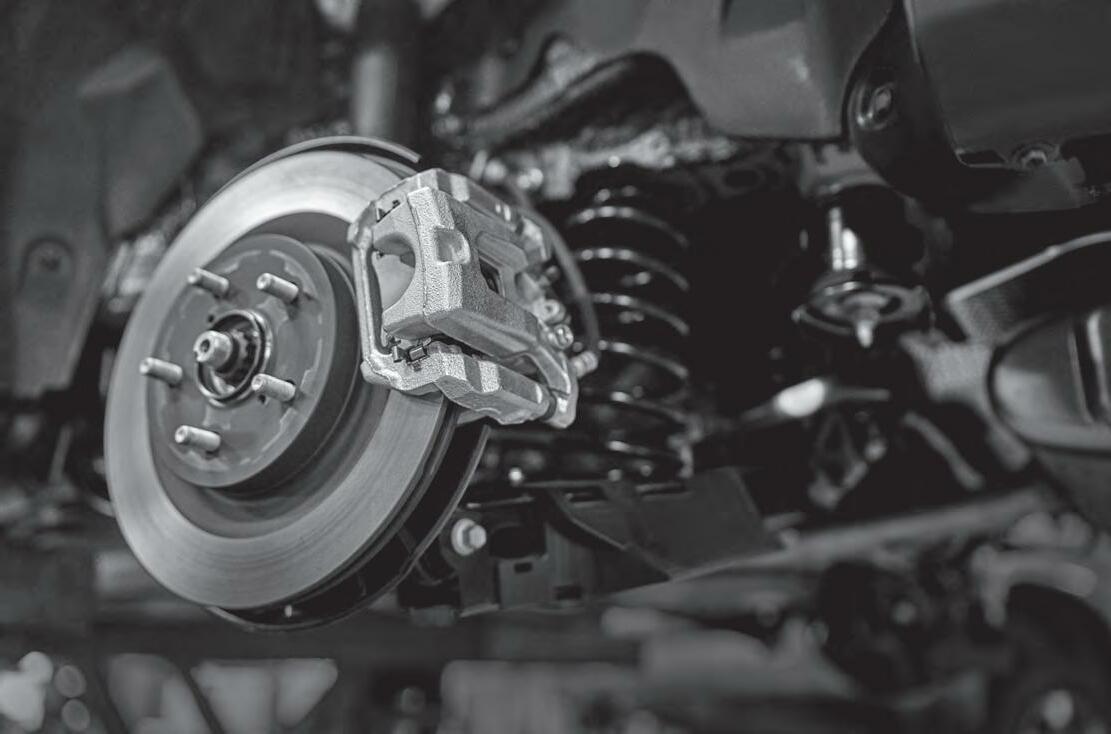
CARS has written about differentiators and standing out from your competition. One idea recently talked about was offering lifetime warranties. After all, if a part is going to fail, it’s going to fail fairly quickly — well before any standard warranty period expires. But offering a lifetime warranty is enticing to the customer because they believe you stand by your product like no one else.
It’s something we offered long before it become a talking point. We honoured all our muffler and shock lifetime warranties and made sure customers were always covered by them. We reprinted invoices from our database for those who misplaced their originals. Most customers lose their warranty slips or forget they had purchased warranty parts — but we always made it a point to check. We also gave everyone a full one-year warranty on the work done that day to ensure they could trust us and that the repair was done properly.
we were stocking ourselves. This gave us a backup to our own inventory.
We attended Lordco’s annual Trade Show in Vancouver every year and purchased at least $80,000 of stock and got a larger discount and dating on these purchases. It was a win-win deal.
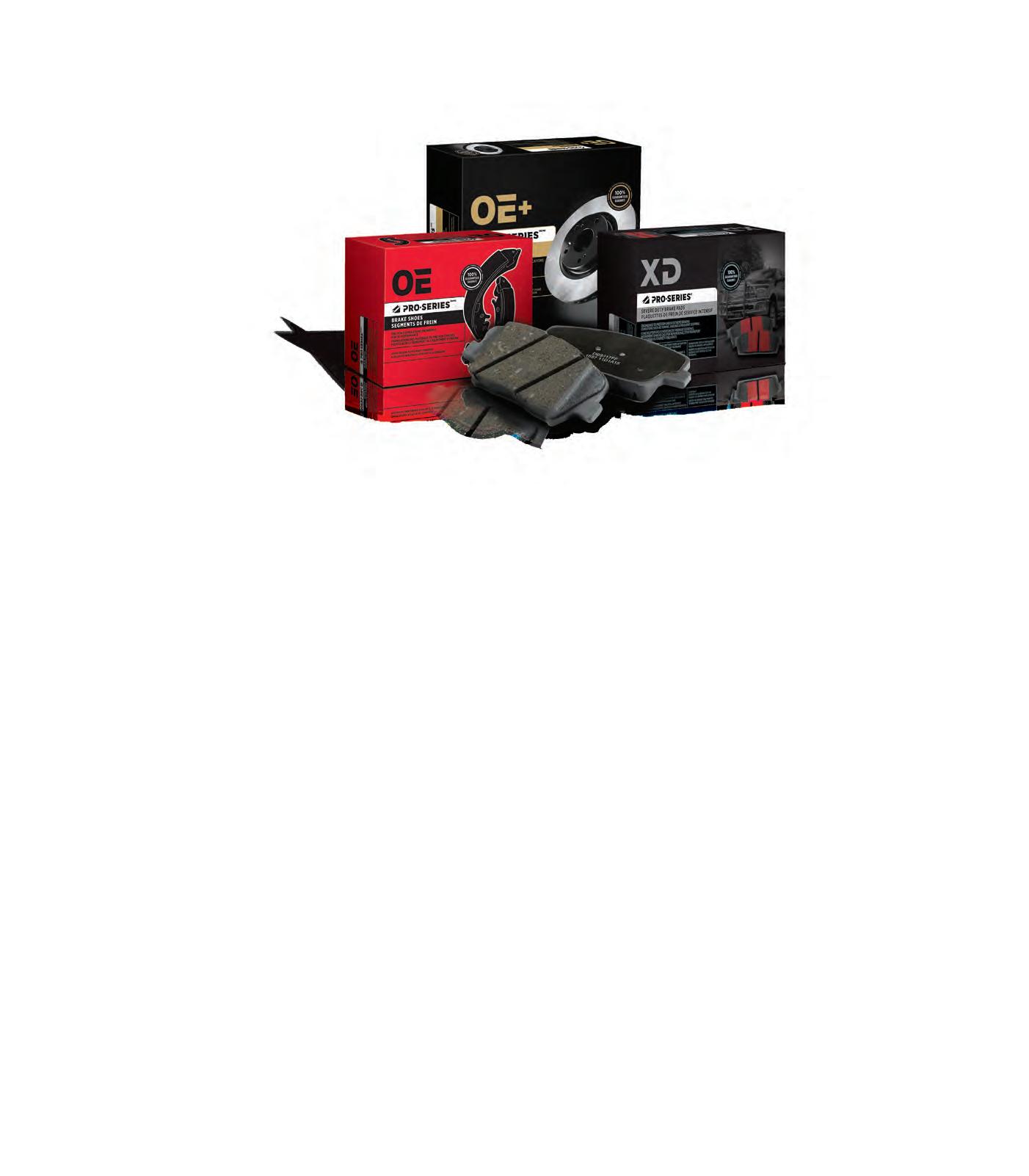
All of this allowed us to grow a reputation and grow our bottom line. Returning customers would tell their friends and family to visit our shop for their exhaust, shocks and struts needs. By word of mouth, people learned that we were honest and got repairs done quickly and properly. Over the years, some of our customers came from as far as 900 km away just to have work done in our shop, then turned around and headed back home.
One last note for all shop owners: Pay your bills on time — or early — and in full. This is the thanks you give to your supplier for all they are doing for you. Without a solid jobber on your team, you're losing the game.
Look after your customers with your own inventory and they will return and get their family and friends to come to your shop too.
So work with your jobber properly, negotiate your discounts, cash discount and dating. You will have a larger profit at year-end. We certainly did.
John Enemark was the owner of Harvey’s Muffler in Prince George, B.C., until his retirement in 2021.Milwaukee Tool announced it will soon release new M12 RedLithium High Output CP2.5 and XC5.0 Battery Packs this fall. The batteries provide 25 per cent more power on high-demand tools while running 25 per cent cooler through heavy applications, allowing users to maximize productivity. The High Output feature has been available since 2018 on the M18 line. The increased performance will maintain the same footprint as current M12 batteries. The improved technology for the M12 line leads to increased runtime and the durability to withstand wear from more demanding applications, allowing the professional to be more productive. The new items are compatible with the entire M12 line. The new battery packs will launch in November 2022.

www.crpautomotive.com

Continental has expanded its line of hybrid battery cooling fans. The company now provides direct replacement fans for the Buick LaCrosse, Chevrolet Impala and Volt, Ford C-Max and Fusion, Honda Civic, Hyundai Sonata, Kia Optima, Toyota Camry and Prius hybrid models and more from 2003-2021. The fans are designed as an exact replacement for the original fan to restore the original battery cooling performance to the vehicle. A properly functioning is critical to maintaining the health of the battery and the vehicle’s overall fuel economy. The fans feature an OE design, including identical mounting locations and plug-and-play electrical connections, to help ensure an easy installation.

www.continentalaftermarket.com
Tire Mechanic’s Resource (TMR) is now offering three new tire spreaders to make repairs on vehicles easier. The new spreaders allow the operator to repair tires and perform tire inspection, cutting, buffing, cleaning, patching and more. Options are available for cars as well as light and heavy-duty trucks. The Air Operated Elevating Heavy-Duty Tire Spreader
allows users to repair all tire sizes. it’s adjustable in five stages. It features a heavy-duty pneumatic cylinder, a moveable tool rack, adjustable clamping arms and tire rollers. The Air Operated Tire Spreader features fully adjustable clamping arms and is built to handle a large variety of tires. It’s pneumatically powered with foot pedal controls and includes a tool pan and adjustable light. The Manual Tire Spreader provides a 360-degree swivel top and has a wide base for added stability. It’s adjustable in six stages and the platform can rotate horizontally 180-degrees for all types of tire repairs.


Transit is introducing a new generation of Bright Knights LED headlight bulbs, a better performing and longerlasting replacement for its older line. The 4,000 lumen LED bulbs feature a more compact design with a 360-degree adjustable beam. The bulbs fit most domestic and imported vehicles without the need for special tools, modifications or external drivers. The fanless design makes them run quieter, more durable and eliminates radio interferences, a common occurrence in models with fans. The 13 product numbers are suitable for 99 per cent of vehicles on the market. The bulbs come with a key to adjust the harness and plugs directly into the vehicle's original socket. www.transitinc.com
The first half of 2022 saw ZF Aftermarket add 203 new parts to its TRW chassis product portfolio. The new offerings make TRW chassis parts available to more than 126.2 million additional vehicles in operation in the U.S. and Canada. The new chassis SKUs include control arms, ball joint stabilizers, tie rods and related products. TRW also added 320 new chassis, braking, steering and other parts for the U.S. and Canada in 2022, extending coverage to approximately 136 million additional vehicles overall. www.kwsuspensions.net

KW automotive launched the KW V4 Coilover suspension kit for the Porsche Taycan. The kit enables a seamless lowering of up to 35 millime-

ters. It helps provide a increase in cornering stability at high speeds while also reducing body roll. The suspension focuses on driving pleasure and improvement in driving and lateral dynamics. In addition, the KW dampers with adjustable multi-valve technology increase ride comfort combined with maximum lowering. The compression damping and rebound damping can be adjusted independently in the low-speed and high-speed range. www.kwsuspensions.net
Continental has expanded its line of OE engine management sensors. The sensors are designed to perform to OE standards and deliver trouble-free, plug and play installation. The OE mass air flow (MAF), absolute manifold pressure (MAP) and flex fuel sensors play a key role in regulating the engine’s air/fuel ratio and will help shops to restore the performance of their customers’ vehicles to OE specifications. The MAF sensors offer coverage for popular Audi, BMW, Chevrolet, Dodge Ram, Hyundai, Kia, Land Rover, Mercedes-Benz, Nissan, Subaru, and Volvo models. The MAP sensors deliver a full range of BMW models from 2009 to 2016. The Flex Fuel sensors cover popular GM makes including Buick, Cadillac, Chevrolet, and GMC. www.continentalaftermarket.com
ProMAXX Tool has released new threaded PlierPull Locking Plier Adapters. These provide more pulling power from its quick slide hammer connectivity. They are ideal for repairs where a high level of force is needed. The PlierPull is works for auto body repairs by popping out cotter pins, pulling bushings, seals, and other applications. The adapters are available in four sizes (3/8”, 5/8”, 5/16” and 7/16”) to attach to the most common varieties of locking pliers and slide hammers. ProKit versions, which combine the adapter and 11-inch slide hammer, come in three sizes.
www.promaxxtool.com

A redesigned software interface for the John Bean B2000P Wheel Balancer provides users with enhanced performance and functionality. Enhancements include a automatic data entry feature that automatically detects all wheel dimensions, resulting in an automatic selection of the balancing mode, weight type and positions. With no manual data entry necessary, this time-saving feature will speed up the balancing cycle time while minimizing operational errors. It also features laser 3D surface mapping, which utilizes a high-resolution camera and laser-based technology to provide sidewall analysis, as well as depth, wear and tire surface abnormalities that are displayed in an easy-to-read format. www.johnbean.com
Brake Rotors and Drums
Brake Pads and Shoes
Brake Calipers
Hub Bearings
CV Axles
Chassis Parts
Complete Strut Assembly Shock Absorbers



Strut mounts
Radiators
Water Pumps
Steering Pumps and Racks and Pinions
Steering Gears
Starters and Alternators
Batteries
Oil Pans
Fuel Pumps
Wiper Blades
Ignition Parts and Coils
Fuel lines

Exhaust Parts, Universal Converter, and Flex Pipes
Misc Automotive Parts


939 Warden Ave Scarborough ON M1L 4C5 Info@hotspotAutoparts.com | www.hotspotautoparts.com

Auto parts and accessories distributor Transit has introduced Mpulse sensors, its first product line in the automotive sensors market. It consists of 10 sensor categories and up to 2,300 product numbers. The sensors are made to meet or exceed the performance of original equipment to ensure their reliability, yield, and lifespan. They come with a three-year year or 58,000 km warranty and sealed antistatic packaging that protects them from electrical charges and moisture during transport. www.mpulse-sensors.com



More than 100 new part numbers were recently released by Mevotech, covering a range of domestic and import passenger vehicles, pickup trucks, and SUVs up to model year 2022. Included in the release are upper

and lower ball joints for 2020-2022 Jeep Gladiators available in both the TTX and Supreme lines; Supreme front lower control arms for the 2017-2022 Cadillac XT5; Supreme front outer tie rod ends for the 2019-2022 Chevrolet Silverado and GMC Sierra 1500; and 27 repair solutions for wheel hubs, front and rear for 20182021 Chevrolet Traverse and 2017-2021 GMC Acadia, front for 2015-2019 Ford Transit 350-HD and front for 2018-2020 Lincoln Navigators and Ford Expeditions. www.mevotech.com

Milwaukee Tools has introduced M18 Fuel wet/dry vacuums, along with accessories designed for jobsites. The wet/dry vacuums come in six-, nine- and 12-gallon dual battery options. These have been designed


to outperform 3.5-4.25 peak HP corded wet/ dry vacuums with durable wheels and hoses versatility. Tanks, carts and motor heads are interchangeable. There are 19 innovative Air-Tip Trade Focused Vacuum Accessories that are fully compatible with the vacuums. Innovation for the end of the hose for maximum efficiency throughout the workday. Options include a utility nozzle, palm brush, corner brush and dust collector. www.milwaukeetool.com








ProMaxx Tool’s new Cylinder Head Repair Kit allows technicians to rescue a botched repair where an attempt to drill out a broken exhaust manifold bolt has penetrated the cylinder head. After fully extracting the damaged bolt, a technician uses a machine-shop-grade tooling tap to prepare the hole. Then, the included new Blind ProSert, with a light coat of liquid thread lock, is inserted into the hole, completing a repair that will remain
Over 500,000 vehicle parts and products in inventory, all ready for delivery: that’s over 500,000 good reasons to make us your number one partner. napacanada.com

Autel www.autel.com


Tuffy Security Products has introduced the Underseat Lockbox for 2020-2022 Jeep Gladiator models. The outof-sight lockable storage box (Model #387-01) provides 2,000 cubic inches of storage volume discreetly under the rear seat without disturbing the OEM styling of the Gladiator. When the rear seats are lifted up, Gladiator owners can quickly access gear and valuables in the lockbox that are protected by dual locks. It features the company’s Pry-Guard Locking System and is made with two 10 tumbler double bitted security locks with built-in weather seals. www.tuffyproducts.com


Hunter www.hunter.com
Mister Transmission www.mrtransmission.com
......................
25
4 ORDER BY 6 PM FOR SAME DAY SHIPPING
Bosch www.boschdiagnostics.com π SHIPPING SUPPLY SPECIALISTS COMPLETE CATALOG 1-800-295-5510 uline.ca

Tara Hammer worked in the automotive aftermarket part time to help pay for law school. Most people would think that, once she graduated, that would be the end of her aftermarket career. Think again. Now working as the general counsel for Lordco Auto Parts, she is proof positive that the aftermarket industry has a career path for everyone in a variety of fields
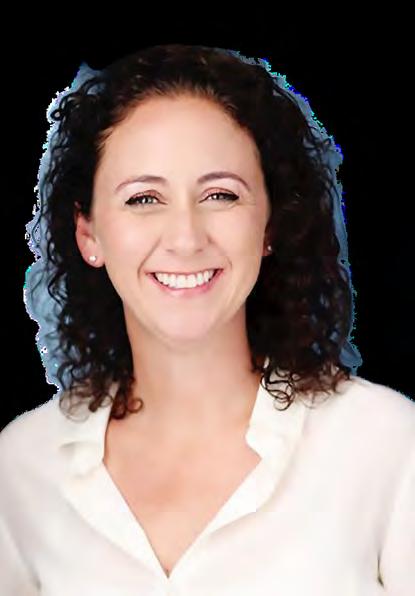
Name: Tara Hammer
Company: Lordco Auto Parts
Title: General Counsel
Number of years in the aftermarket: 28
I am general counsel and the vice president legal at Lordco Auto Parts. I started working for Lordco in 1996 as a parts delivery driver. From there, I worked on the parts counter for four years during my undergrad degree and in the summers during law school, I worked for our founder Ed Coates. After I articled in Victoria, I came back to Lordco in 2007 to take over as general counsel.
I attended the University of Victoria for my undergraduate degree, a Bachelor of Arts with a major in History, and then went to the University of Alberta where I earned my Bachelor of Law (LLB).
To be honest, the last place I thought I would find a career was the automotive aftermarket. I have zero mechanical skills but I love researching, problem-solving and dealing with customers, so it didn’t take me long to recognize I could apply these skills to a number of different positions within our organization.
The number one reason I work in the aftermarket industry is the team atmosphere at Lordco; it is more like an extended family than colleagues. The aftermarket industry is so dynamic, there is always something interesting around the corner, be it advances in technology, regulatory changes, the increasing pressures on our workforce and customers the list goes on; the evolving challenges that help keep things fresh and engaging
I really enjoy meeting colleagues from across the country and from different organizations. It is an extremely collegial environment. Over the years, I have made some great connections and enjoy watching my committee members continue to progress and grow in the industry.
That the automotive aftermarket industry is amazingly diverse, there are so many different opportunities beyond the traditional roles. It offers something for everyone.
Young Professionals in the Aftermarket (YPA) is an Automotive Industries Association of Canada (AIA Canada) committee comprising of young executives, of 45 years or younger, in the Canadian auto care sector. The Committee’s mandate is to ensure the future growth and prosperity of the aftermarket industry.

What does your participation in the Young Professionals in the Aftermarket Committee mean to you?
What advice would you give someone either starting in the industry or looking to transition into the industry?
BAAN has over 5,000+ transfer cases and differentials in stock.














Built in Canada with the highest quality parts from ZF, S-Tec, Magna Powertrain, Dana, Spicer, Timken, FAG, INA and American Axle
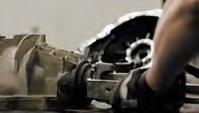
BAAN doesn't settle for lower quality off-shore parts for our transfer cases and differentials and you shouldn't either.

With over 20,000+ engines, transmissions, differentials, transfer cases and more in stock, BAAN Powertrain strives to be Canada's Powertrain People.




